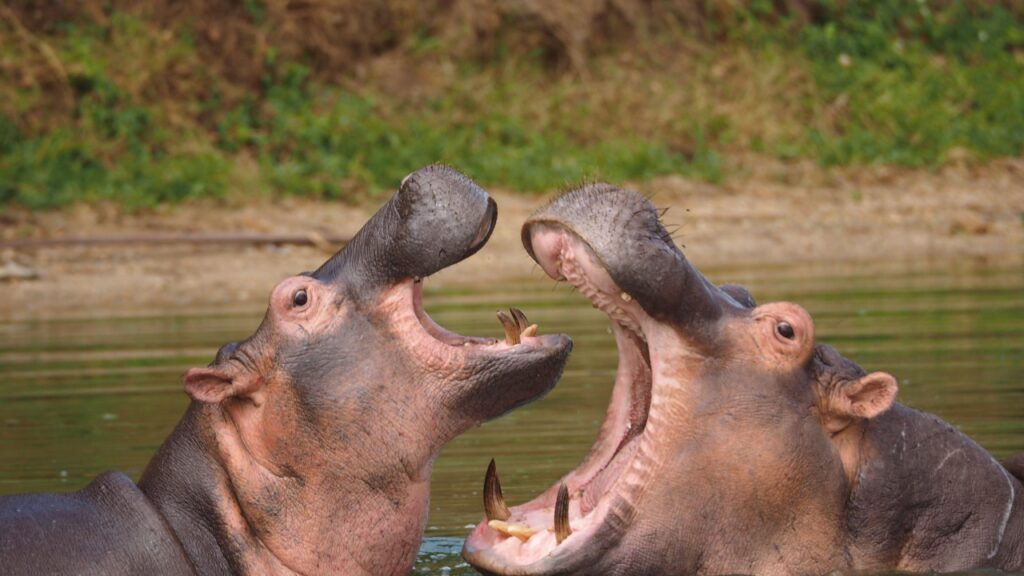Hippos are some of the most intriguing and dangerous creatures on the planet. These massive herbivores, often seen lounging in rivers and lakes across Africa, possess a blend of characteristics that make them both fascinating to observe and essential to their ecosystems. Did you know that hippos are responsible for more human fatalities in Africa than any other large land mammal?
Hippos are fascinating. From their impressive vocalizations to their nearly impenetrable skin, the hidden details of their lives reveal a lot about what makes hippos such amazing and formidable animals. Prepare to be amazed by their unique behaviors and learn about the crucial roles they play in maintaining the balance of their natural habitats.
1. Hippos can hold their breath for up to 5 minutes underwater.
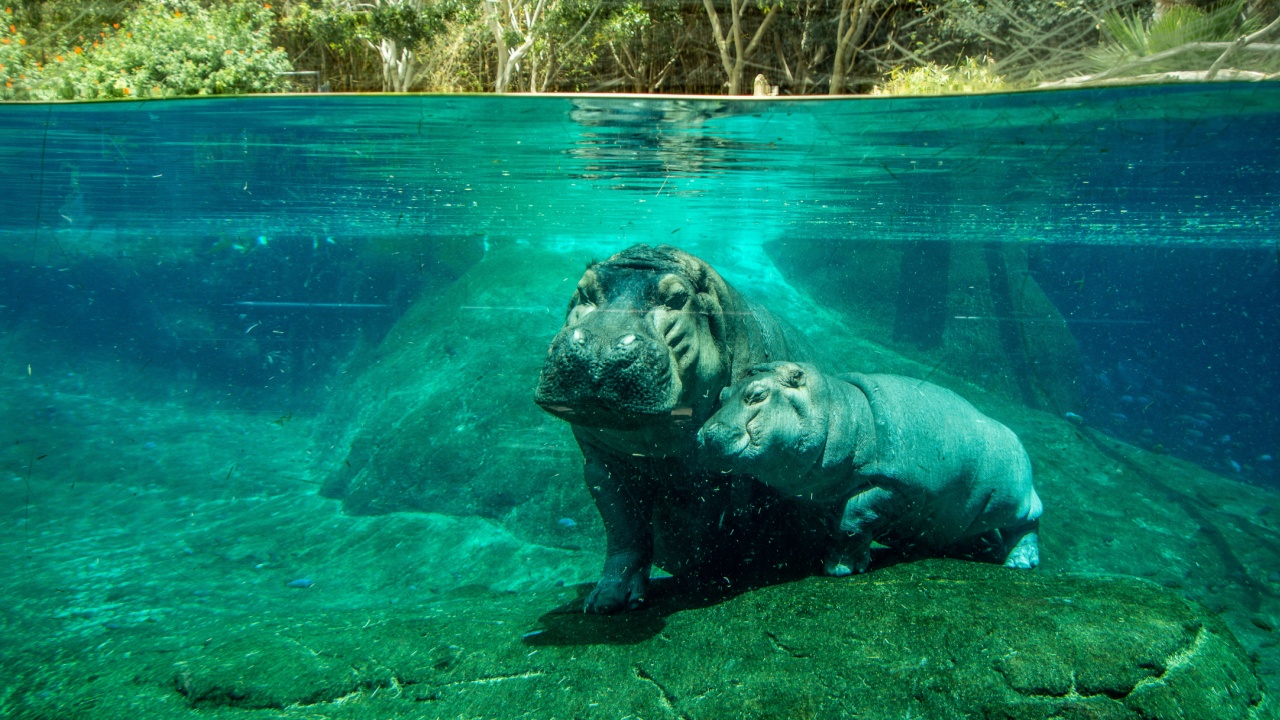
You might be surprised to learn that hippos can stay submerged for up to five minutes. These massive creatures need to come up for air, but they’re well adapted to life in the water.
Newborn hippos, on the other hand, can only hold their breath for less than a minute. In a way, this makes their early experiences underwater quite challenging.
2. Hippo sweat acts as a natural sunscreen.
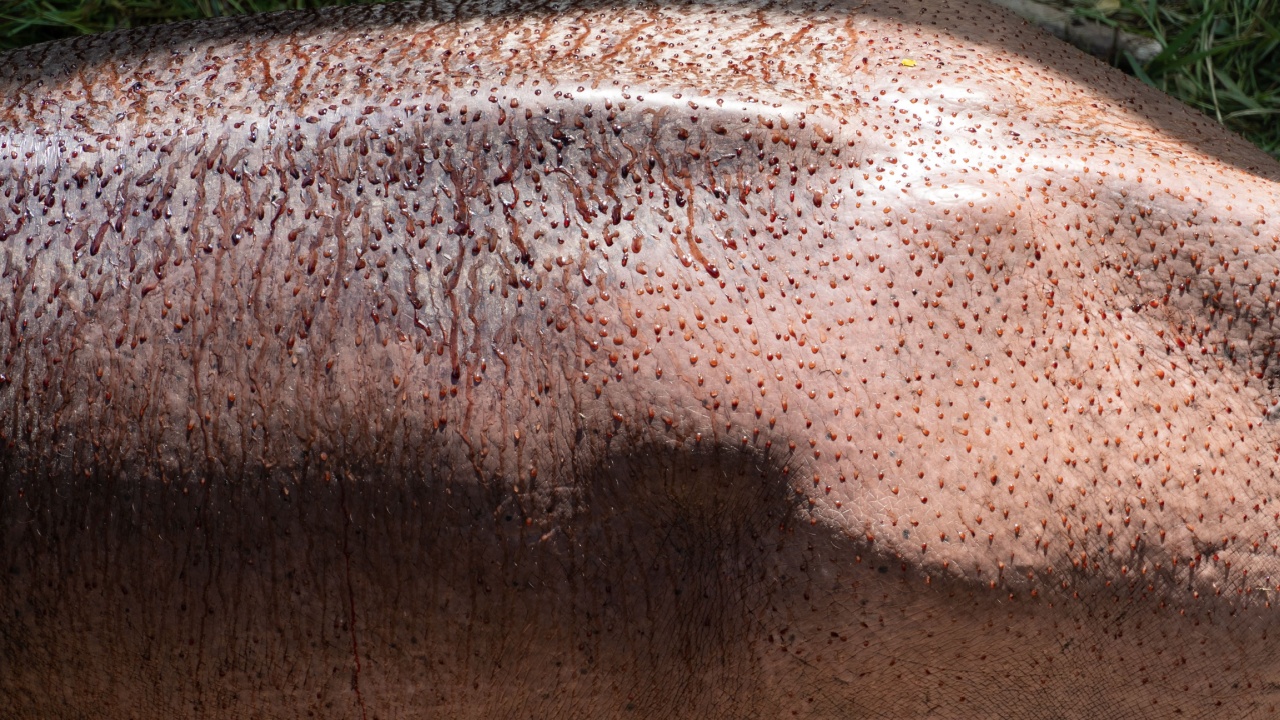
Hippos produce a unique secretion known as “hippo sweat.” This thick, reddish fluid helps protect their skin from the sun’s harmful ultraviolet rays.
The fluid’s pigments absorb UV light, working like a natural sunscreen. This helps prevent sunburn and skin damage.
Additionally, the secretion has antibacterial properties, which helps keep their skin healthy and free from infections.
3. Despite their size, hippos can run up to 20 miles per hour.
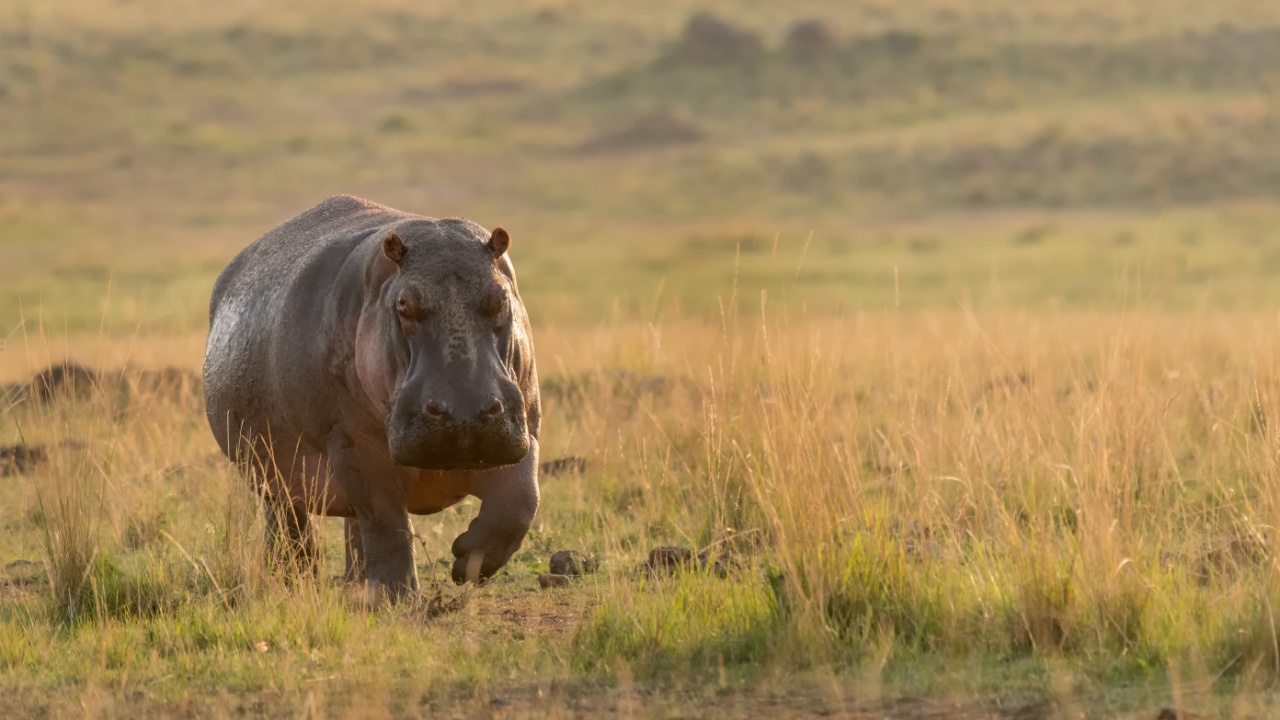
Hippos, with their large, barrel-shaped bodies, might not seem like fast movers. Surprisingly, these hefty animals can run at speeds up to 20 miles per hour.
This speed is especially impressive given that hippos can weigh as much as 3,500 kilograms (around 7,700 pounds). Their agility on land allows them to defend their territory efficiently.
4. Hippos are responsible for more human deaths in Africa than any other large animal.
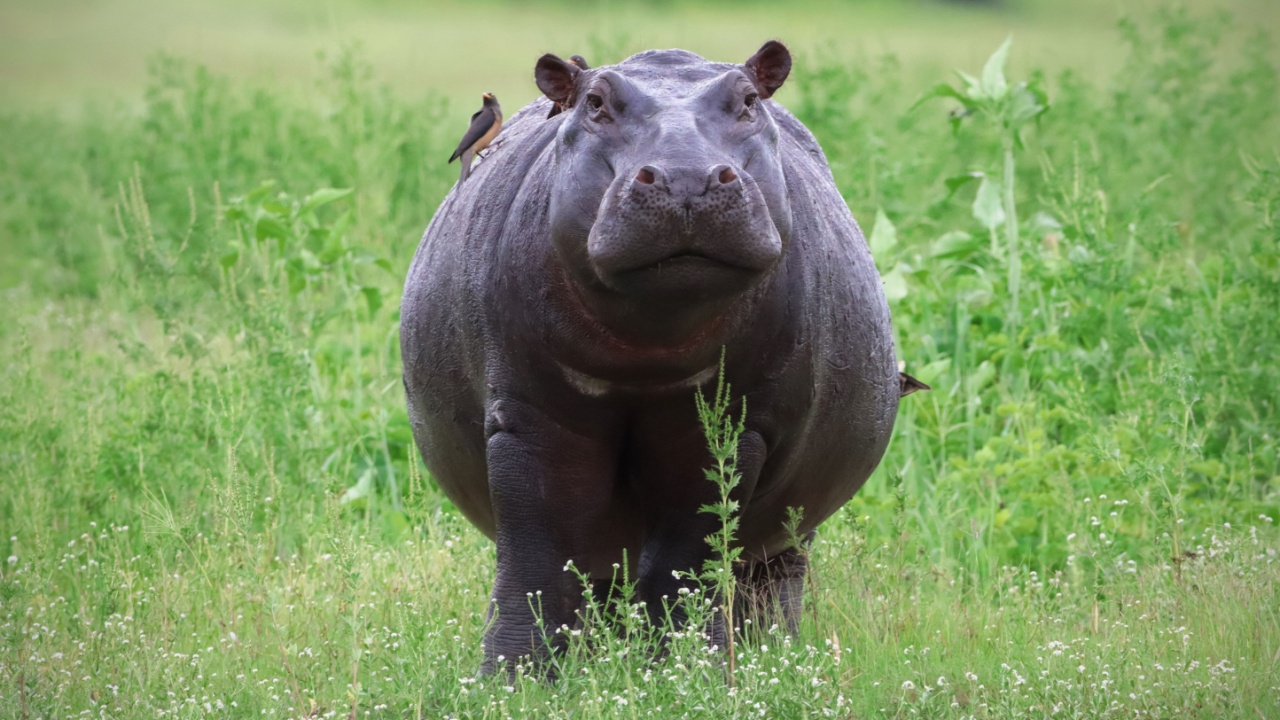
Hippos are surprisingly dangerous animals. They are responsible for more human deaths in Africa than any other large animal, killing up to 500 people each year.
Despite their bulky size, hippos can move quickly on land and are highly territorial in water. If you encounter a hippo in its territory, especially near water, it could aggressively defend itself.
These massive creatures can weigh up to 4,500 kilograms (9,920 pounds) and can easily crush a person. Their sheer strength and unpredictable nature make them a formidable force in their habitats.
5. They use their large mouths to display dominance
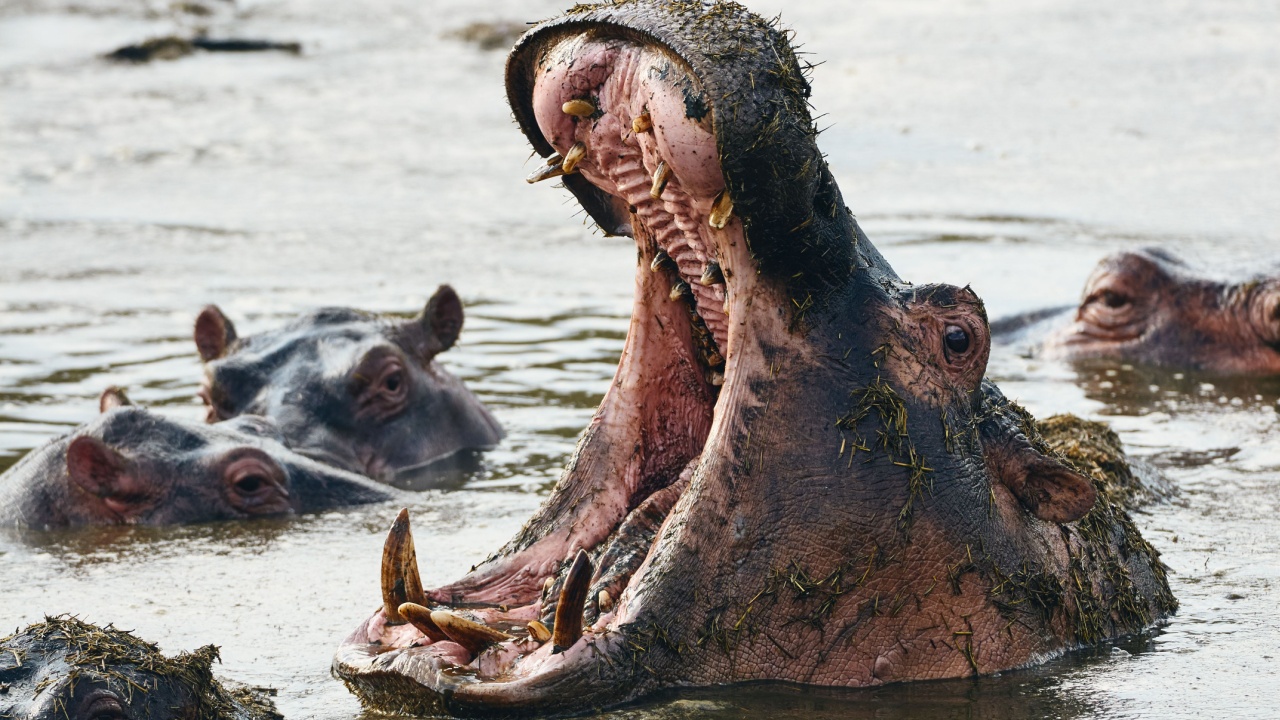
Hippos can open their mouths up to 150 degrees wide. This impressive ability is not just for eating but also serves as a display of dominance. When a hippo opens its mouth wide, it’s showing its teeth and jaw strength to warn others.
Their large mouths are a key part of their social behaviors. These displays help them establish territory and hierarchy within their group.
6. Hippos communicate through a series of grunts and honks.
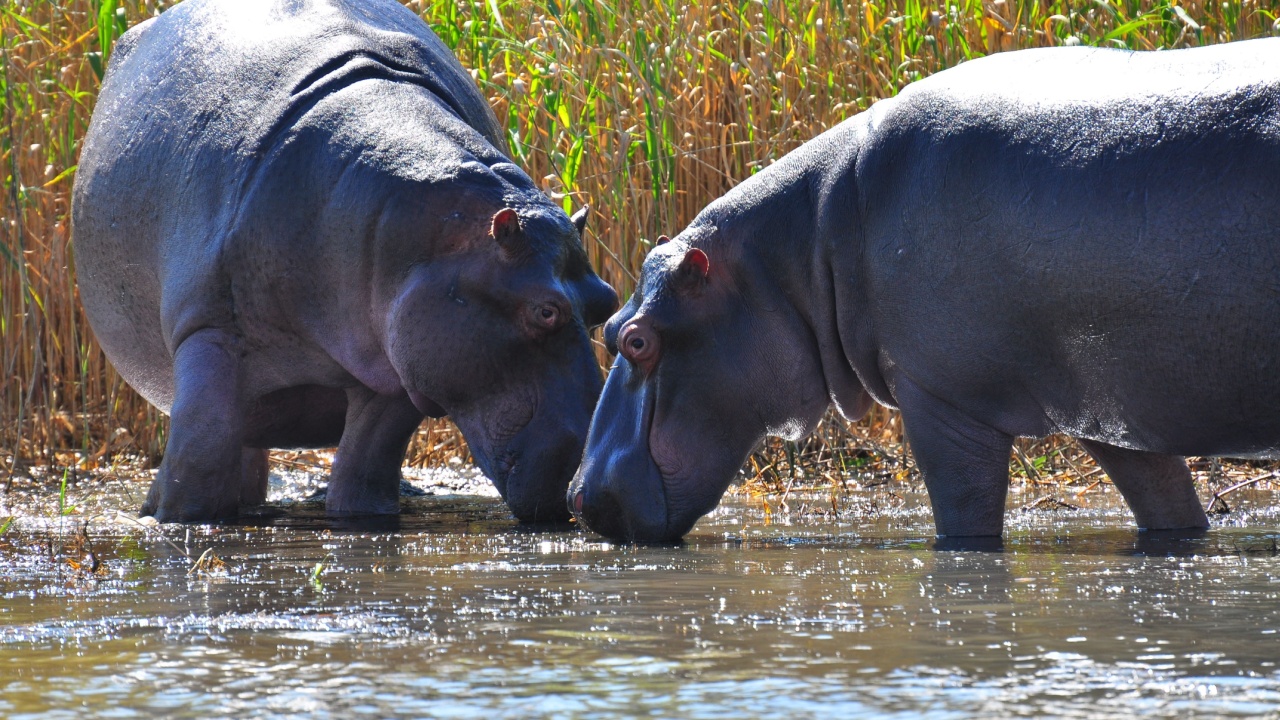
Hippos use a variety of sounds to communicate with each other. These include grunts, honks, and even wheezes. Each sound serves a specific purpose in their social interactions.
A hippo’s “wheeze honk” can be heard from more than a half-mile away. These vocalizations help them maintain connections with their social group. They also make sounds like roars and squeals in different situations.
7. The word ‘hippopotamus’ comes from the Greek for ‘river horse.’
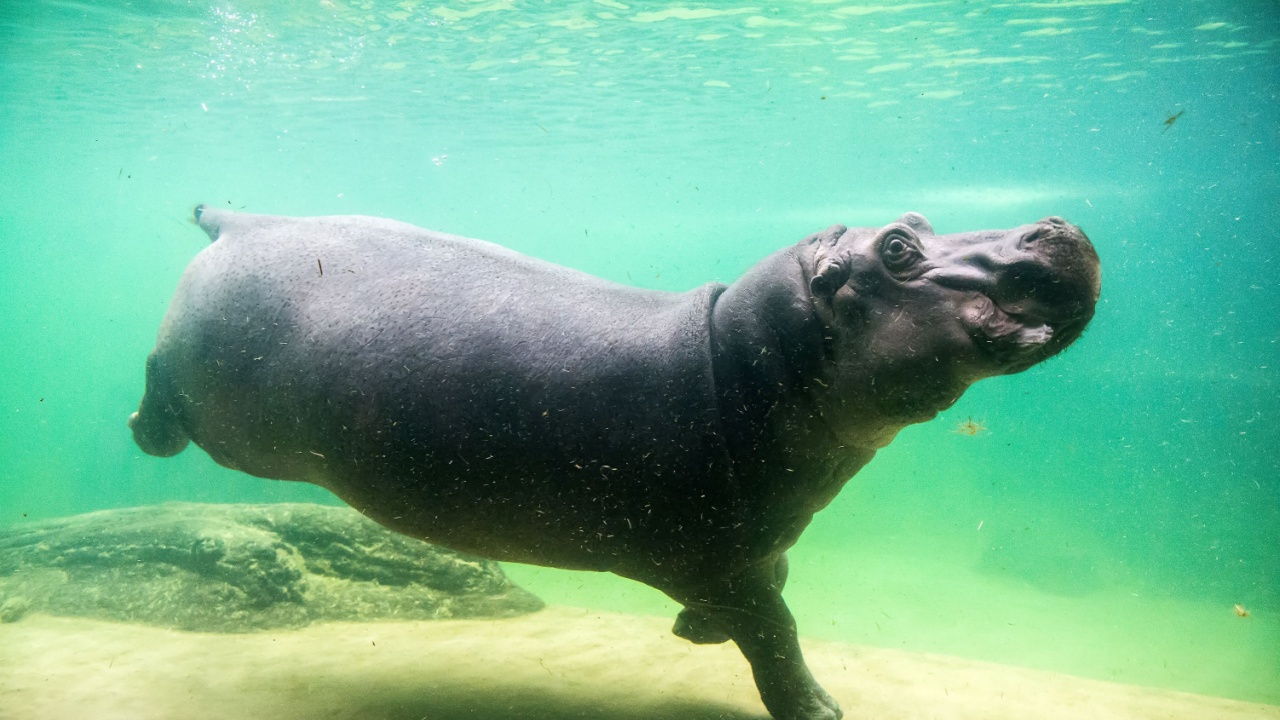
The name ‘hippopotamus’ traces back to ancient Greek. ‘Hippos’ means horse, and ‘potamos’ means river.
This name reflects their behavior of spending much of their time in water. Hippos love lounging in rivers and lakes, which helps them stay cool.
These animals were well-known to ancient civilizations, who saw them as the ‘river horses’ of the wild.
8. Hippos secrete a red substance that looks like blood but is actually a skin moisturizer.
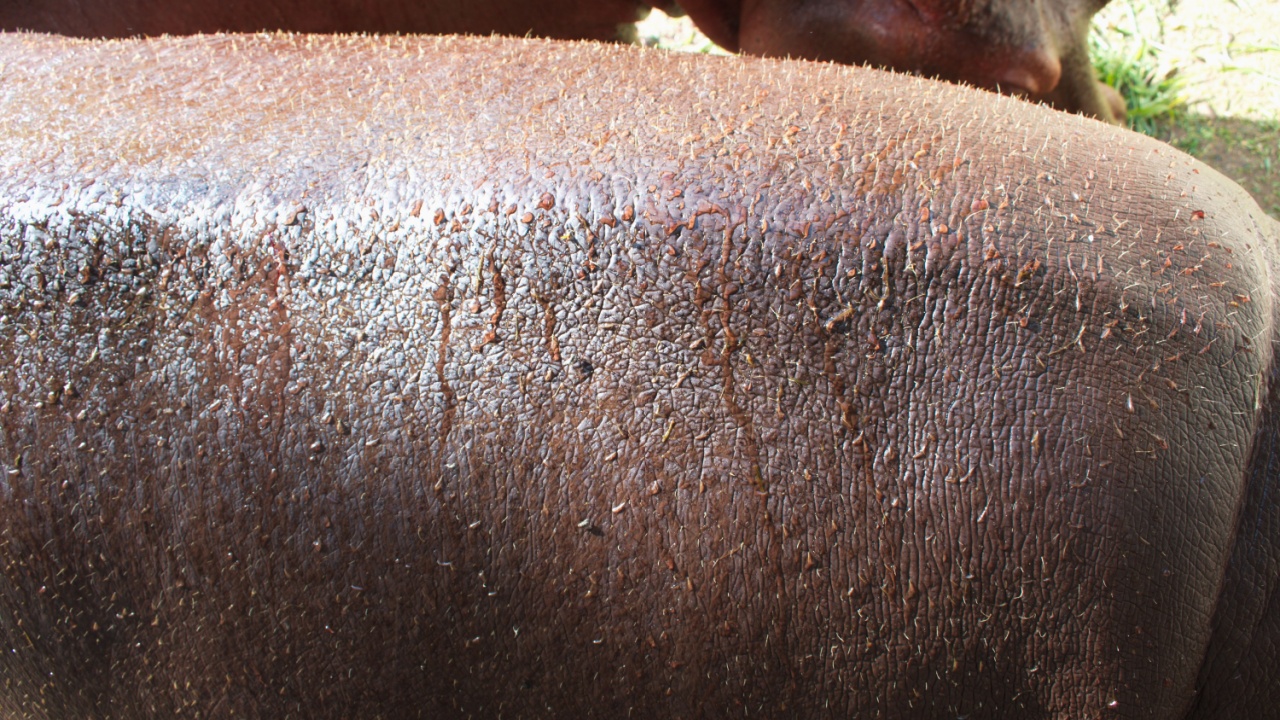
Hippos secrete a red, oily substance from their skin. This liquid, sometimes called “blood sweat,” is neither blood nor sweat. It acts as a natural sunscreen, protecting them from the sun’s harmful rays.
This secretion also has antibacterial properties. It keeps their skin moist and free from infections. Despite its alarming color, it’s a vital part of hippos’ unique adaptation to their environment.
9. Female hippos give birth to a single calf and nurse it underwater.
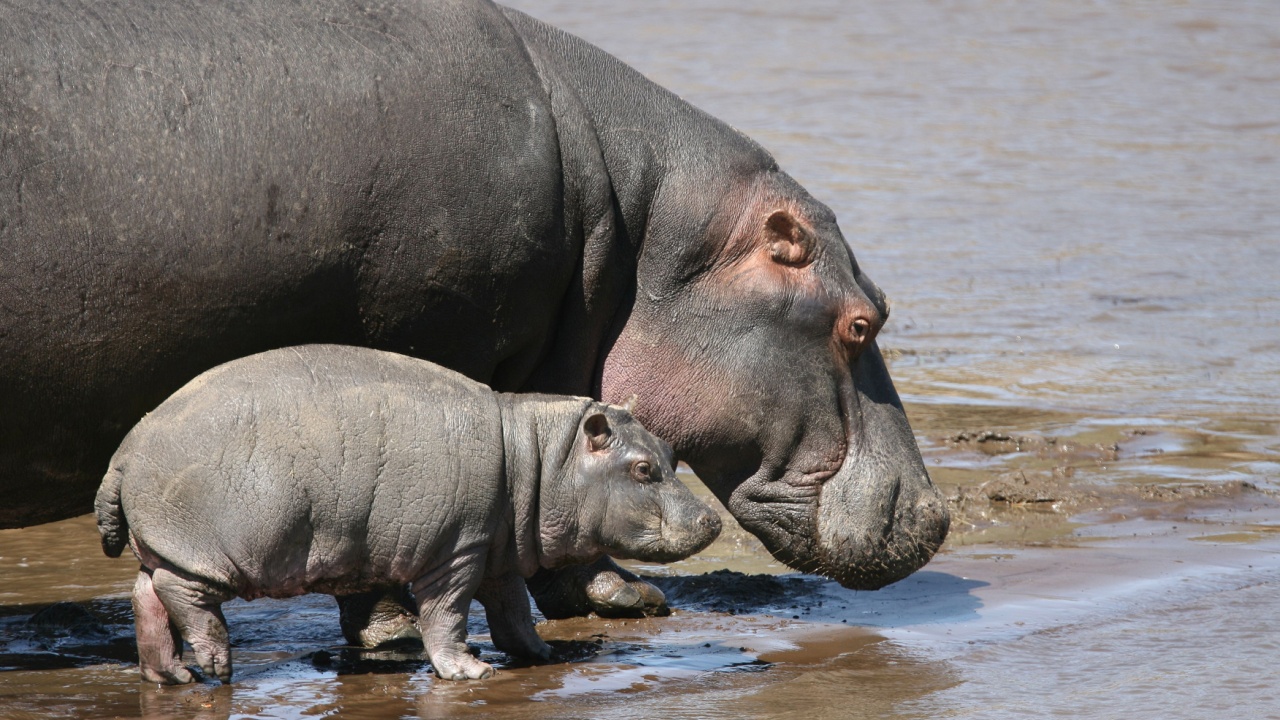
Female hippos usually have just one baby at a time. They nurse their calves both on land and underwater.
After giving birth, a mother hippo helps her calf reach the surface to take its first breath.
The calf learns to swim quickly and can even drink its mother’s milk while submerged.
10. Hippos have large canine teeth that can grow up to 20 inches long.
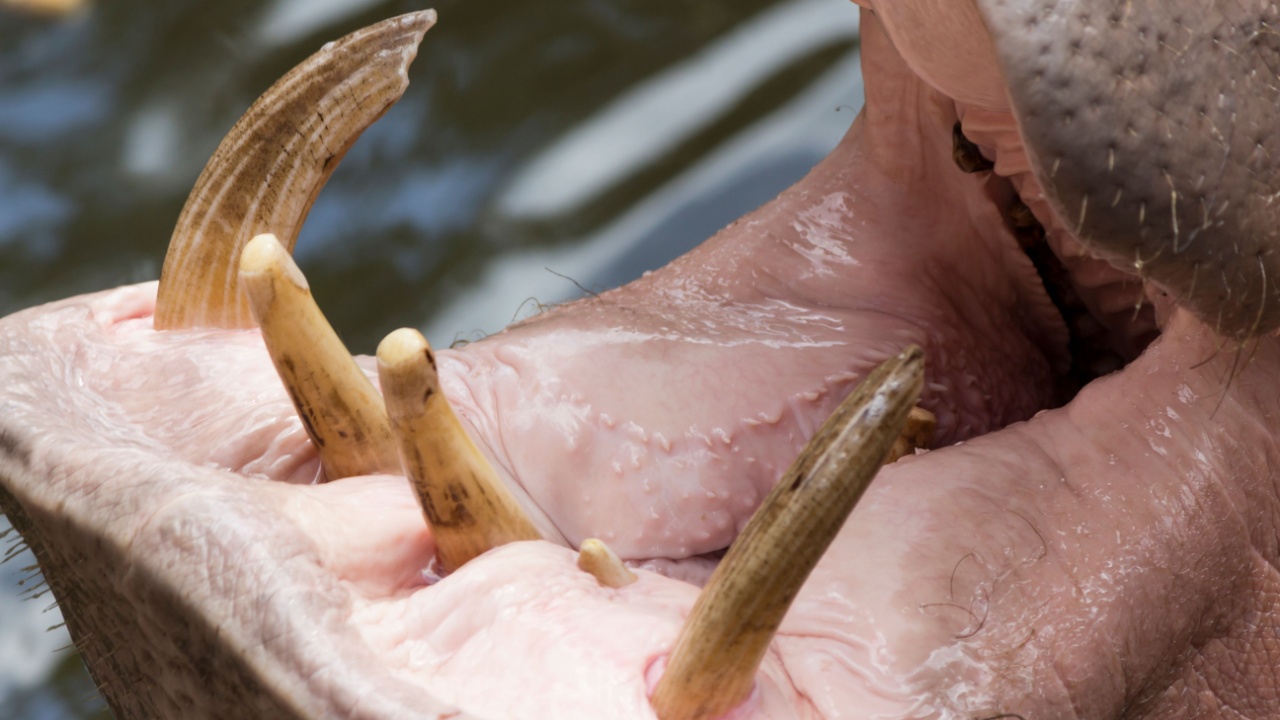
Hippos are known for their enormous teeth. Their canine teeth, also called tusks, can reach a staggering 20 inches in length. These canines are found in both male and female hippos.
The canines grow continuously throughout the hippo’s life. This growth helps them maintain their impressive size. The large teeth are not just for show; they are essential for protection.
You might be surprised to learn that hippos use their massive canines in fights. These teeth are powerful weapons in their social battles.
11. A group of hippos is called a bloat.
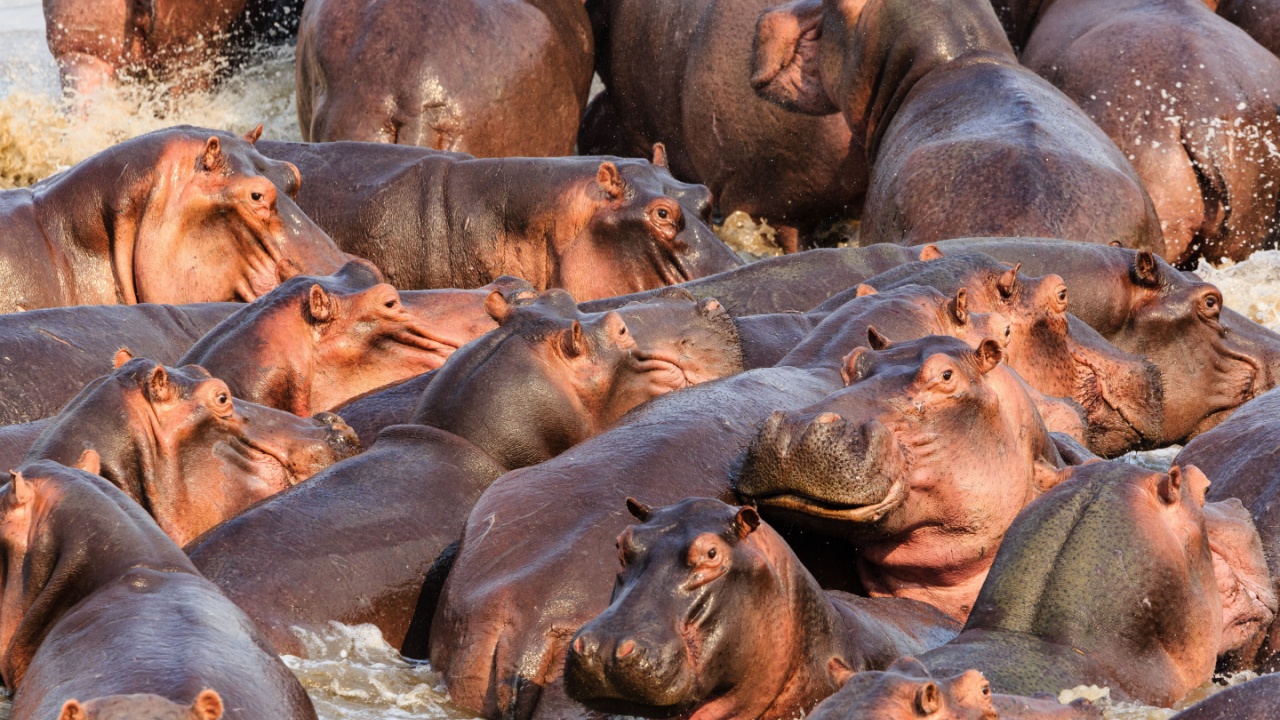
A group of hippos is known as a bloat. You might also hear them referred to as a herd or a pod. Hippos are social animals and can typically be found in groups of 10 to 30 members. Occasionally, larger groups of up to 200 can be seen.
The term “bloat” captures the hippos’ bulky and heavy appearance perfectly. Living in groups helps hippos with protection and navigating their environment more efficiently.
These groups are often led by a dominant male, and they include several females and their young. This social structure is vital for their survival and wellbeing in the wild.
12. Hippos are Herbivores and Mainly Eat Grass
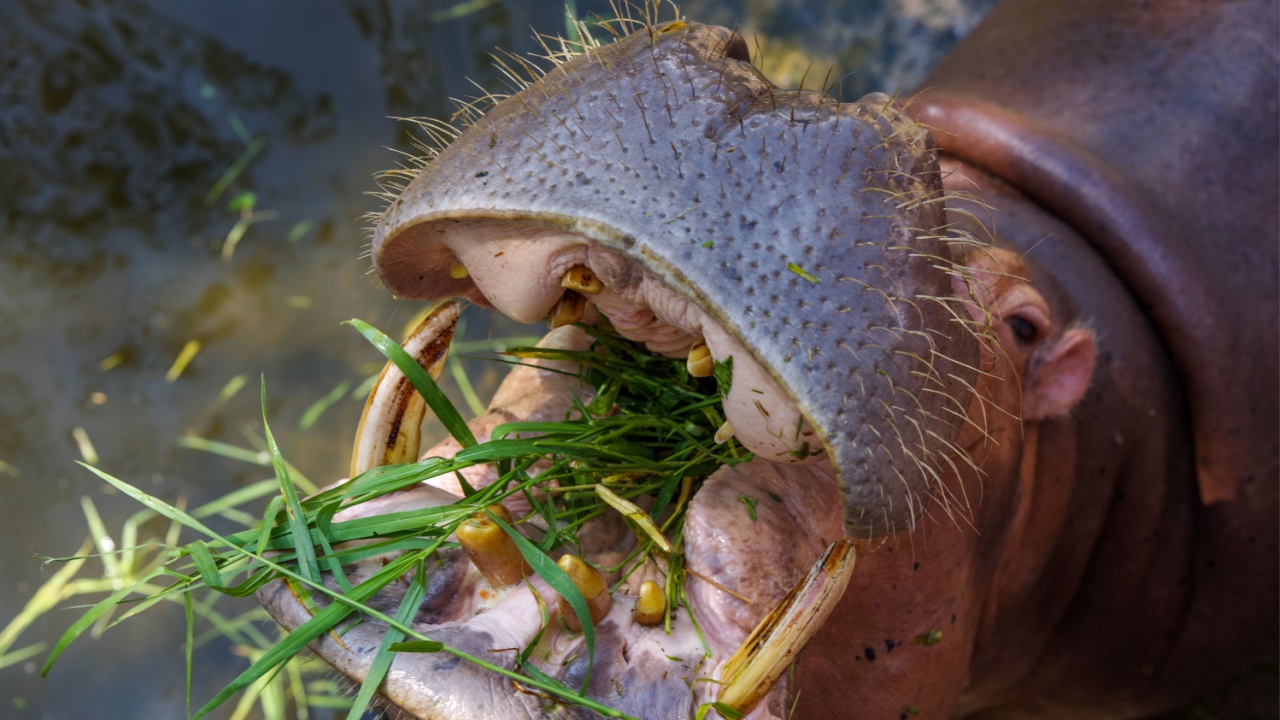
Hippos are primarily herbivores, which means they primarily eat plants. The main component of their diet is grass. Hippos can consume large quantities of grass each day.
Most hippos will graze on grass for several hours, often during the night. They usually stay in water during the day to avoid the hot sun. Though grass is their main food, they may occasionally eat fruits or vegetables.
13. Hippos spend most of their time in water to keep cool.
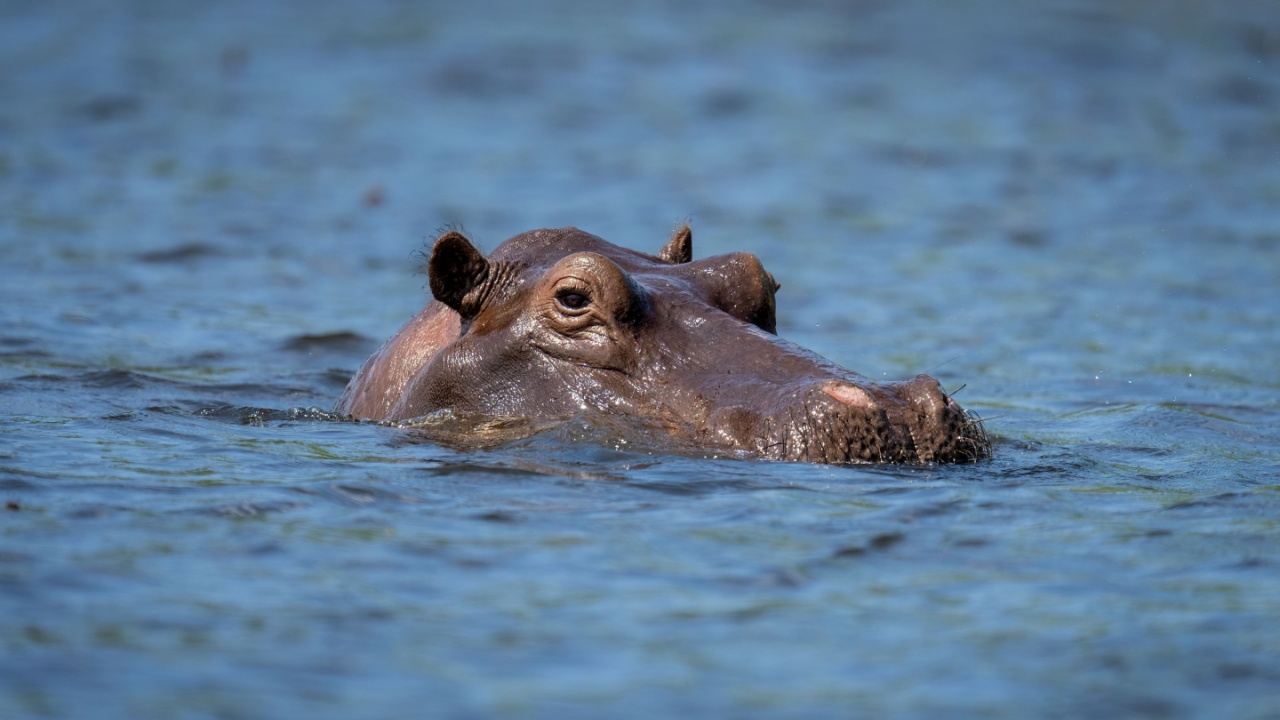
Hippos are large, plant-eating mammals that can weigh up to 9,920 pounds. They primarily consume grass, but one of the most interesting things about them is their lifestyle in the water.
Hippos spend a significant amount of time submerged to maintain their body temperature. This helps them stay cool under the hot African sun.
14. Hippos’ eyes, ears, and nostrils are positioned on top of their heads so they can remain mostly submerged while staying alert.
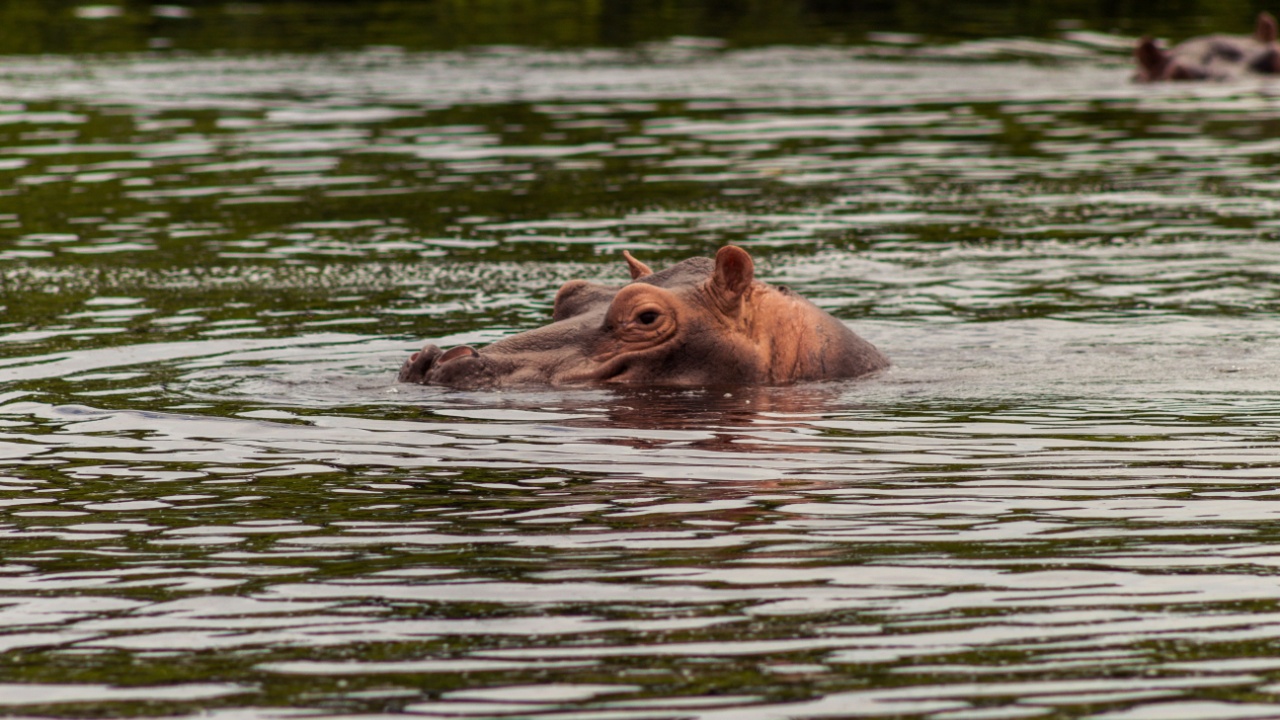
Hippos are unique in their anatomical design, with eyes, ears, and nostrils located on the top of their heads. This allows them to keep most of their body underwater and still see, hear, and breathe.
By doing this, hippos can stay cool and safe from predators, all while keeping an eye on their surroundings. It’s an efficient adaptation for their semi-aquatic lifestyle.
15. They are one of the loudest land animals, with their ‘wheeze-honk’ calls reaching upwards of 115 decibels.
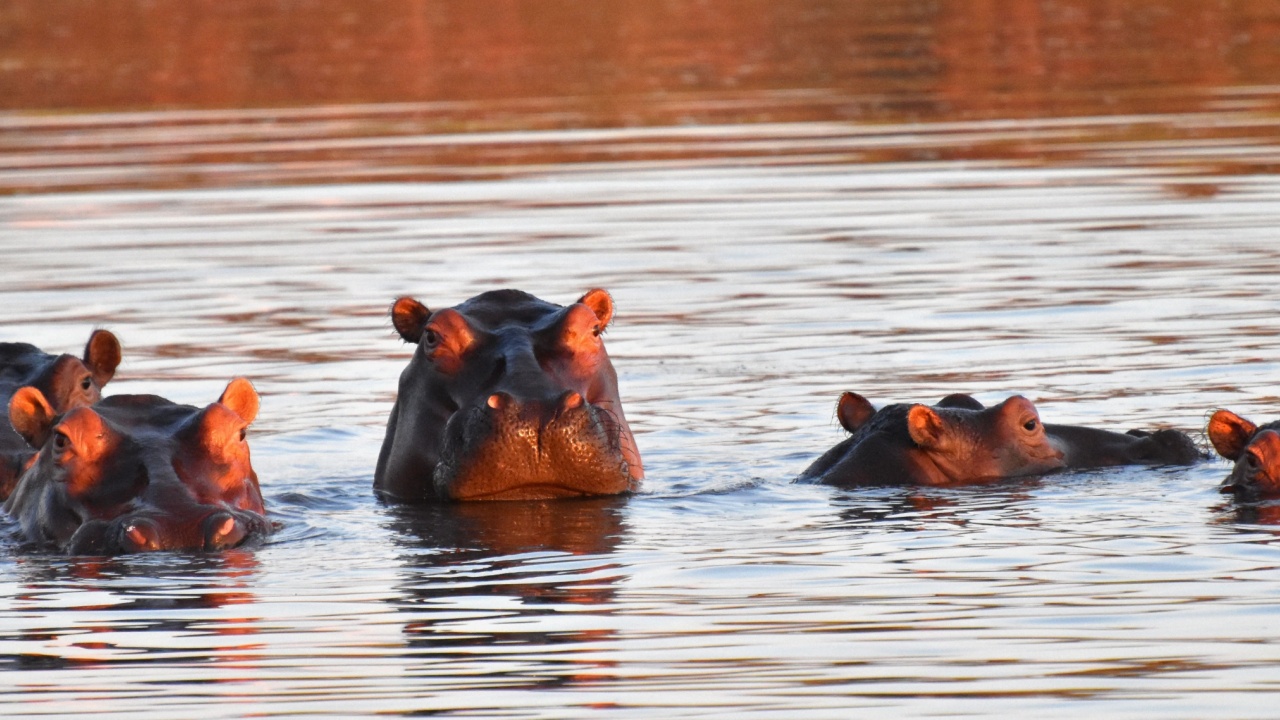
Hippos are incredibly noisy creatures. Their distinctive ‘wheeze-honk’ calls can be heard for miles. This call isn’t just loud—it can reach 115 decibels. That’s louder than a rock concert.
These sounds help hippos communicate with their social groups. Their vocalizations can travel over long distances, allowing them to stay connected even when far apart.
16. The average hippo weighs between 1.5 to 4.5 tons.
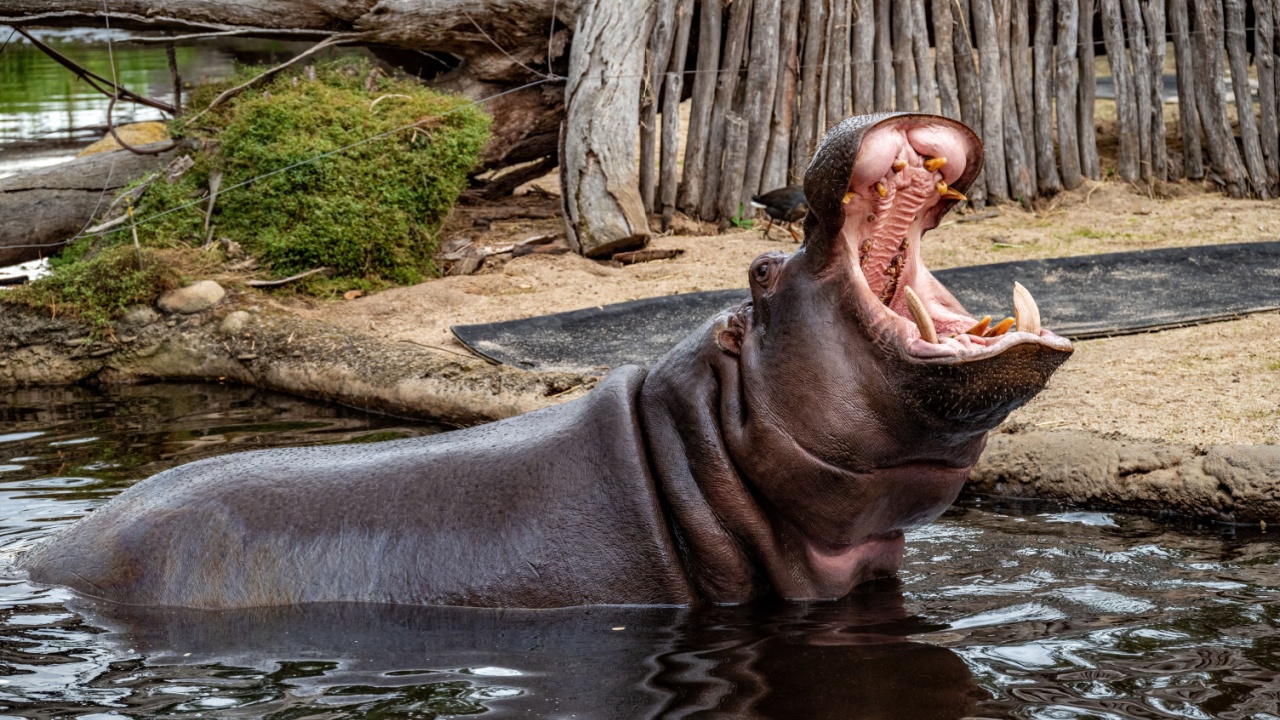
On average, you will find that hippos weigh between 1.5 to 4.5 tons. This range includes both males and females, although males are often on the heavier side.
17. They mark their territory by spinning their tails while defecating to spread their scent.
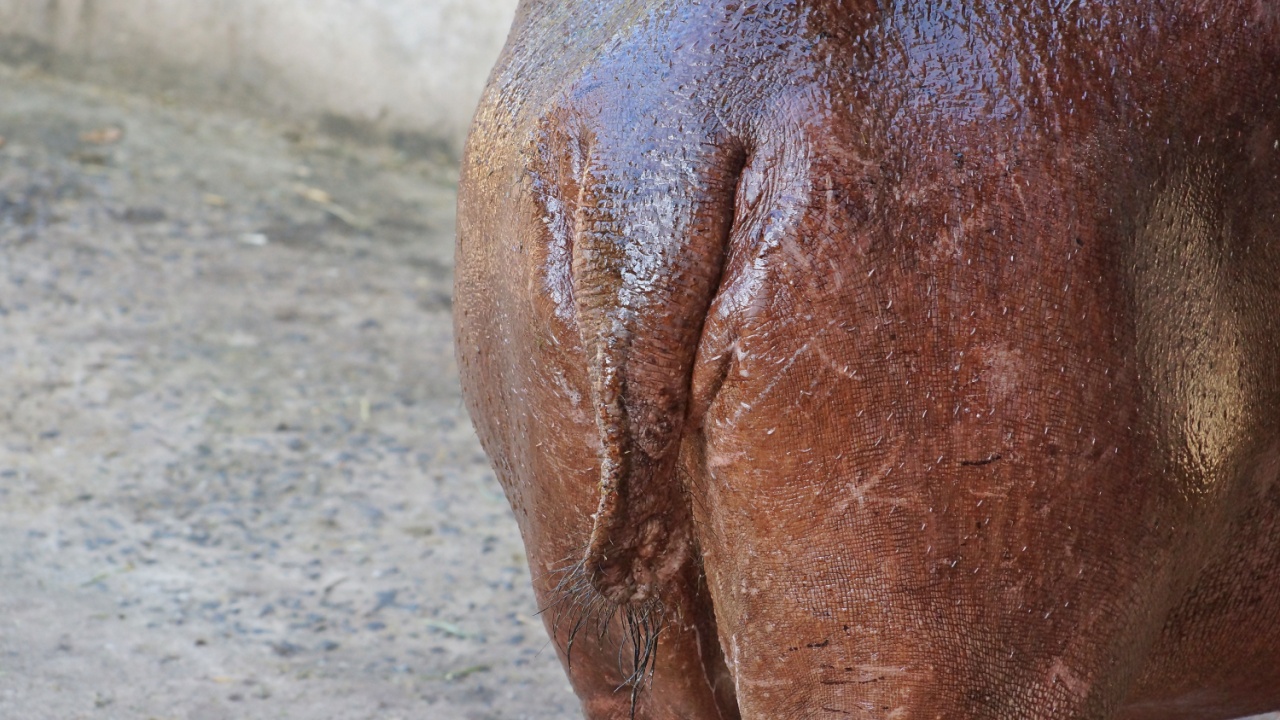
Hippos have a unique way of marking their territory. When they defecate, they spin their tails rapidly, flinging their feces in all directions.
This behavior helps them spread their scent over a wide area, which can be up to 10 meters. It serves as a clear message to other hippos that the territory is claimed.
This act is known as “dung showering.” It communicates dominance and presence without needing direct confrontation.

